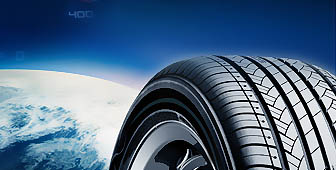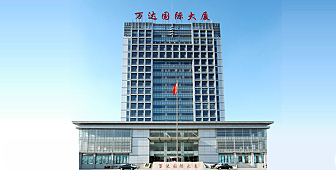HOW TO CHOOSE TYRE
Tyre selection and use According to the vehicle's load, speed, road conditions, climate and environment to consider, you will choose the right car tyres? Tyre is one of the most important components of the car driving mechanism, which is directly related to the safety and operating economy of the vehicle. If you can not correctly select and use tyres, not only will reduce the performance of the car but also affect the safety of the car, and even cause unnecessary casualties and property damage. Here to share the details of the purchase method:
The basic principles of choice:
1.- Calculate the tyre's load capacity and speed level based on the axle load to determine the tyre specifications, which involves the vehicle's performance and driving safety.
2.- According to the structural characteristics of the vehicle (such as tractor, dump truck, mixer, etc.), driving road conditions, climate and other structures to determine the tyre (radial tyre or ordinary tyres) and tyre patterns to meet the vehicle through, ride comfort , Steering characteristics and tyre interchangeability and ease of maintenance and other requirements, and estimate the economy.
3.- Consider other ancillary requirements of the tyre, such as the stability of the tyre supply and vehicle management issues.
Choose the basic principles of the detailed method
u Rated load
When selecting a tyre, you must first ensure that the tyre can not be overloaded. If the tyre overload, not only the tyre will produce abnormal wear and cause a sharp shortening of life, and sometimes because of tyre overload caused by tyre stiffness and adhesion performance deterioration, seriously affecting the stability of vehicle traffic, and even vehicles in the process of driving Sudden burst, causing the car to death. For the same specifications of the tyre may have different load capacity, the choice should pay attention to the following matters:
1.- The same specifications of the tyres have different layers of structure, so the load capacity is different, to carefully choose.
2.- The same specifications of the tyre in the use of single-tyres and twins and loading the allowable load is not the same. Twins and loaded, due to the pavement and the axle after loading down bending deformation, the load inside and outside the tyre is not the same, then the total load capacity of the two tyres is a single child about 72 times the state, not 2 times relationship.
3.- Tyre secondary selection principle is the tyre load capacity is not high on the low, before and after the axle to be balanced.
u Determination of speed level
The same specifications of the tyre not only have different load capacity, there will be different speed levels, and sometimes the vehicle's tyre load is not overloaded, but may speed overload, can cause excessive tyre heat, excessive wear and puncture and other issues, tyre speed Excessive may lead to the following:
1.- Tyre overheating can cause excessive wear and even puncture.
2.- If the tyre speed exceeds a certain degree during the course of the vehicle, the tyre itself will resonate and generate a "standing wave" when the vibration frequency caused by the external force is equal to the natural vibration frequency of the tyre. In the event of a "standing wave" phenomenon, the vehicle will be violent jitter, the tyre will be due to rapid warming and blasting, this situation is the most dangerous.
3.- When the vehicle is running on a road with water, if a certain speed is reached, there will be a "lubricating oil film" like a sliding bearing between the tyre and the ground. The vehicle in motion is like a hovercraft floating on the water. Kind of phenomenon known as the "water cushion effect." This phenomenon occurs, the tyre and the ground between the sharp decline in the adhesion, once the external vehicle immediately deviated from the normal driving track, ranging from the flick, the weight of others turn.
4.- When the vehicle reaches a certain speed, if the tyre's dynamic balance accuracy is not enough, will cause the steering wheel and tyres excessive wear. Low-speed tyre balancing accuracy is low, high-speed driving often appear this phenomenon. Different speed grades of tyres, its dynamic balance accuracy is different.
For ordinary tyres, the speed level is generally at the maximum speed of 90km / h (heavy truck tyres allow the maximum speed below 70 km / h), the maximum speed is the vehicle speed, not the average speed, the maximum length of 1 H Heavy vehicles with ordinary tyres are not suitable for high-speed high-speed on the highway, should use the radial tyre. However, the same type of radial tyres also have different speed grade specifications (S0 ~ 190km / h). It is necessary to select the appropriate radial tyre according to the speed of the vehicle.
Mechanical properties of tyres
Tyre mechanical properties are also important indicators of tyre performance, mainly refers to the tyre through the performance, cushioning performance and stiffness.
1.- Through performance BOTO TYRES, WINDA TYRES, BOTO TRUCK TYRES
Tyre's performance mainly refers to two aspects, on the one hand, the smaller the diameter of the tyre, the smaller the obstacle capability of the vehicle, so the different vehicles use different diameter tyres to ensure the vehicle's obstacle performance; When the vehicle is running on a muddy and snowy road, the adhesion between the tyre and the ground is reduced, and sufficient driving force can not be provided to ensure that the vehicle passes normally and is effective. Therefore, the tyre must have reasonable structure such as tyre diameter, and pattern.
2.- If the rigidity of the tyre is not enough (that is, often said "tyre soft"), the tyre's attachment performance immediately deteriorates, the vehicle will appear to turn the lack of deviation from the normal driving track, this situation at high speed Danger. In general, the tyre stiffness is large, the standard tyre stiffness is small.
3.- Tyres must have good cushioning performance, together with the suspension to absorb and buffer the vibration of the vehicle, if the tyre cushioning performance is poor, will affect the ride comfort of the vehicle, but also affect the life of other parts of the vehicle.
Noise
Tyre running will produce noise, different structures and different tyres, at different speeds, the level of noise generated is not the same, and sometimes the noise will reach the extent of annoying.
Other issues to consider:
The same axis on the twins and equipment, can not mix old and new tyres. The new tyres are large in diameter and the old tyres are small in diameter, resulting in serious overload of new tyres, old tyres under loading, and uneven wear of old and new tyres.
The same axis on the twins and equipment, can not be equipped with different specifications of the tyre, different specifications of different tyre diameter, large diameter overload, small diameter under load, will make the tyre wear uneven.
The same axis must be installed with the same pattern of tyres, otherwise, there will be the same axis on both sides of the tyre adhesion is different, so the tyre on both sides of the braking force deviation is too large, prone to brake deviation.
The steering shaft shall not be fitted with a refurbished tyre (hanging head). As the refinancing force between the refurbished layer and the old carcass is poor, it is easy to rub the refurbished layer when turning the vehicle and lose the steering function. In addition, the old tyre ply is often flawed, prone to puncture, it can not be installed on the steering shaft.





